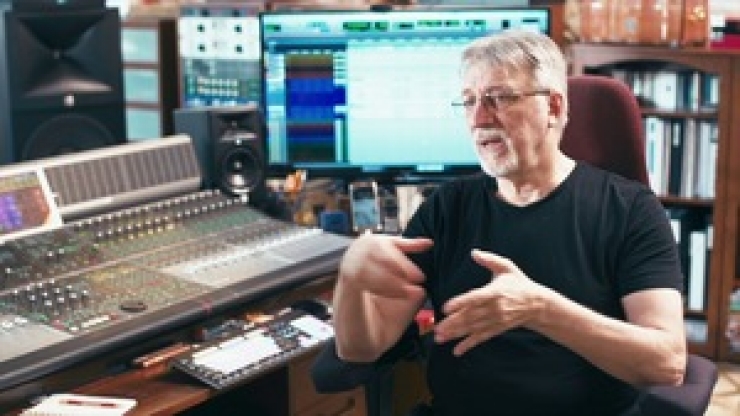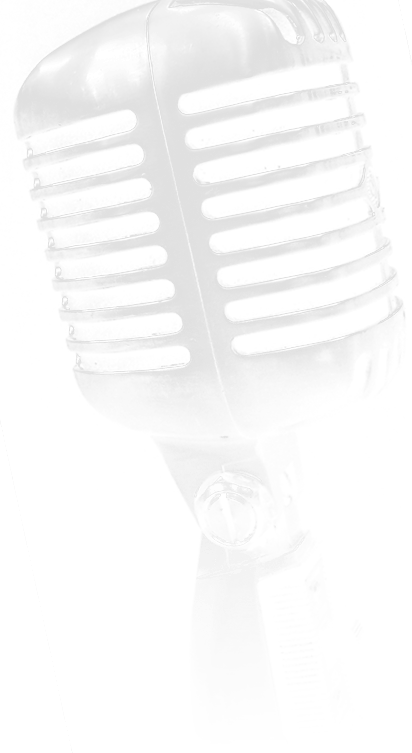
Article Courtesy Bobby Owsinski https://bobbyowsinskiblog.com/2019/04/17/frank-filipetti/
“From Celine Dion, Carly Simon, James Taylor, Tony Bennett and Elton John to Kiss, Korn, Fuel, Foreigner and Hole, Frank Filipetti has credits that run the entire musical spectrum. Known for his fearless ability to either extensively experiment or get instant sounds as the session dictates, Frank’s old school wisdom combined with his adventuresome and modern approach continues to push the cutting edge. This excerpt from the 4th edition of The Recording Engineer’s Handbook focuses on Frank’s way of miking drums.”
Bobby O: Do you use the overheads as cymbals mics or as the basic sound of the kit?
Frank F.: I experiment a lot with the overheads and I’ve gone through a lot of permutations with them. I started out as a drummer and one of the things that I dislike about a lot of recordings is that the sound of the snare is coming mostly from the snare mic. As a drummer I know that the sound at the snare is not exactly what I want to hear on the track. There’s a lot of bloom around the snare, and around the bass drum as well, that I feel is essential to capturing the reality and the dynamics of the snare and bass drum in particular, so my overhead technique is to capture the overall sound of the kit and not just the cymbals. I tend to want to mic the kit so that I do get leakage of the snare, bass drum, everything into the overall sound. I want to be able to put up the overheads along with the bass drum mic and get a pretty nice sound on the kit, so my tendency is to mic a little further away from direct impact of the cymbals.
Most engineers seem to come in with the mics coming from the front of the kit looking back towards the drummer. I put my overheads in the back near the drummer looking ahead towards the kit. I just found after years of experimentation that’s where the best sound for me is. Just above the snare looking out towards the cymbals gives me the depth and the impact that I’m looking for.
The microphones are probably a foot or so above the drummers’ head. I don’t want him banging his head or hitting them with his sticks. They’re far enough back that if he raises his sticks to hit a cymbal, his sticks might hit a mic in front of him but not one slightly behind him. Not only is it great for the snare and the cymbals but it’s great for the toms as well. What I end up having to do because of that setup is to also mic the ride cymbal separately, because the ride sometimes needs that little extra “ping” that you can’t get from miking further away.
Are you using an X/Y or a spaced pair?
It depends on the amount of time that I have to experiment. If I have to set it up really fast just to get going, I’ll go with something resembling an ORTF for starters. I may move it up or down or in or out a bit from there, but the mic position themselves are along the lines of ORTF. I find that gives me more spread and depth than X/Y and less stuff to fool around with than M-S, although I do like M-S miking occasionally. If I do use M-S, I usually supplement it with a wider array as well.
Do you use multiple mics on the kick?
Yes. Not only multiple mics but multiple distances, which is something similar to what I do with guitars. I know that the object is to get all of your mics in phase, but I find that with guitars and the kick drum there are varying distances from the drum or the speaker that actually work in a way that’s complimentary. They can create certain comb filtering that work to your advantage and sometimes works better than doing it with an equalizer. I’ll play around with various distances on a kick drum and guitar amp because on those two instruments in particular, we’re not always looking for the most natural sound, we’re looking for impact. It’s a visceral thing that may not happen live but something that you’re trying to capture onto tape or disc, so I’ll work with multiple mikings for those instruments.
On the bass drum I generally start with a D12 (the D36 is my favorite mic but you can’t always find one) for the dynamic part, and then I’ll put a condenser on it as well with the capsules as closely aligned as possible. The condenser mic will usually be a 4047 or a 47FET or something like that. They’re generally placed just at the outside of the drum looking at the beater head, then I’ll play around with an array of two or three other mics at varying distances. Sometimes we’ll use a sympathetic beater kind of thing where you’ll have just a shell in front of the drum which vibrates to get a little more depth and bottom. Sometimes I’ll build a little tunnel out of packing blankets and mic stands and put another mic or two at the end, so there’s a lot of different things that I try, but the basic setup starts with the two mics just off the front head looking at the beater.
Do you mic the hat?
I always mic the hat. I’ve tried various things on it but it’s the one area that I’ve never been totally happy. Most recently what I’ve settled on is either a 451 with a 10dB pad, a KM84 with a pad, or a Schoeps CMC-5 with a pad, but to be perfectly honest, the hi-hat is the one instrument that you can’t really get too close to because of the low frequency information. If you get too close it tends to color the sound somewhat ,yet you can’t get too far away either because you loose the impact.
How many mics do you usually use on kick?
On a date where I have a lot of time to play around, I’ll use 4 or 5 mics. Like I said, I generally use both a dynamic and condenser to get the sound of both, but Audio Technica has a dual capsule mic where one capsule is dynamic while the other is condenser, so you get both in one head.
On something I just finished we had the 47FET along with the D36 and the dual condenser AT all on the head, then I had I had a 47 and a couple of CMV-3’s and a CM51 further back off the bass drum. Again, that’s because I had a session where I had a lot of time to play.
How are you balancing all of those?
The main sound is the overheads, the bass drum mic and the snare mic. That’s my basic drum sound. Then I’ll fill it in with tom mics and these other mics around the kit. Many of them are faced at the bass drum but also pick up ambience from other drums. The most important thing is to be careful about the phase relationships because you don’t want to smear anything. My general rule of thumb is to listen to a drum with and without the additional mic. A lot of people will just add a mic or take it away to see if it’s adding something, but the bottom line is when you add a mic you’re adding 3dB to the signal so it will almost always sound a little better with it in. What I do is to make sure than when I take the mic away that my level is still the same. That gives me a much truer taste of whether that mic is adding something or not.
I’ll just have the two mics on the snare; top and bottom with the phase swapped on the bottom, adding just enough of the bottom to add a little of the snare rattle. I don’t like the sound of just the top head by itself. I find it to be very unnatural, so I mix just a touch of that in with the overheads.
Do you use room mics at all?
Yeah. If I’m ever thinking about surround, which I am more and more these days, I set up a set of rear overheads, and front and rear room mics. Sometimes my room mics will be high over the kit, but just as often they’ll be low to the floor.
How do you determine that?
The sound of the room and how much metal the guy plays determines the position. Some guys are splashy cymbal players and other guys aren’t. If there’s a lot of cymbal activity and a lot of splashy metal work going on, my tendency is to go lower to the floor to get things warmer. It’s one of those things determined by the amount of time there is to play around, otherwise, I’ll just set them as best as I can.
Another thing on the drums that I tend to do if there’s a lot of cross-sticking is to slip a mic in close to the cross-stick, because I generally find that a mic coming in across the cymbals doesn’t always give me enough of the meat of the cross-stick sound.
When you’re putting 4 or 5 mikes on a kick, do all of these go on separate tracks or do you combine them?
It depends on the session. On a Broadway date or a quick pop date, I’ll generally stick with two mics on the bass drum and maybe just put a room mic close to the floor a couple of feet out from the drums, but if I have the time to play around with it, then I’ll use the multiple mics. Generally speaking it’s a production call. If I’m producing, then what I’ll do is meld as many as I can ahead of time and just go with it.
What I tend to do now is keep these mics on separate tracks because I tend to play around with the timing after the date is over. Visually I try to place the capsules as close together as I can, but no matter how close it looks to be, you usually don’t get it down to the sample. One sample is on the order of microns so I’ll play around with moving the later one to see what happens when I move it in time. Sometimes you’d be amazed how much of a difference that makes in the quality of the sound.
The same thing with guitar amps. I’ll have 3 or 4 mics on one guitar amp like a Marshall cabinet with the slanted front, and 3 or 4 mics on a Marshall cabinet with a straight front. If you go in after they’re recorded and you move those things, so they’re aligned to the sample, you’d be surprised how much better they sound when they’re collapsed into mono and totally phased aligned.
You can read more from The Recording Engineer’s Handbook and my other books on the excerpt section of bobbyowsinski.com.
